In the pursuit of graceful aging, the skin around the mouth often betrays us first. Fine lines deepen into pronounced wrinkles, and what was once smooth becomes creased with age, sun exposure, and repetitive facial movements. While serums, moisturizers, and even fillers may offer temporary relief, many are turning to lip resurfacing as a more lasting and targeted solution. As both a cosmetic and dermatologic intervention, lip resurfacing stands at the intersection of science, aesthetics, and wellness, offering a promising avenue for those seeking the best treatment for wrinkles around the mouth.
You may also like: How to Choose Skin Care for Fine Lines: Evidence-Based Tips for Healthier, Younger-Looking Skin
Lip resurfacing refers to a variety of advanced skin rejuvenation techniques that aim to improve the texture and appearance of the perioral area—the region surrounding the lips. This area is particularly susceptible to fine lines and wrinkles due to its frequent movement and the naturally thinner quality of the skin. Unlike broader facial treatments, lip resurfacing provides a concentrated approach, making it an ideal choice for individuals looking to address localized aging without undergoing more invasive procedures. The focus on this sensitive and expressive zone means that techniques must be both gentle and effective, balancing visible results with minimal downtime.
Wrinkles around the mouth, also referred to as perioral rhytides, are more than just a cosmetic concern—they can impact self-esteem and social confidence. These lines are caused by a confluence of factors: the natural degradation of collagen and elastin over time, repetitive motion from speaking and eating, environmental damage from UV radiation, and even genetics. In women, estrogen decline after menopause can further accelerate the thinning of skin in this region. While the aging process is inevitable, how we respond to it medically and cosmetically has changed dramatically over the last decade, with lip resurfacing now recognized as one of the best treatment options for those who want meaningful results without undergoing surgery.
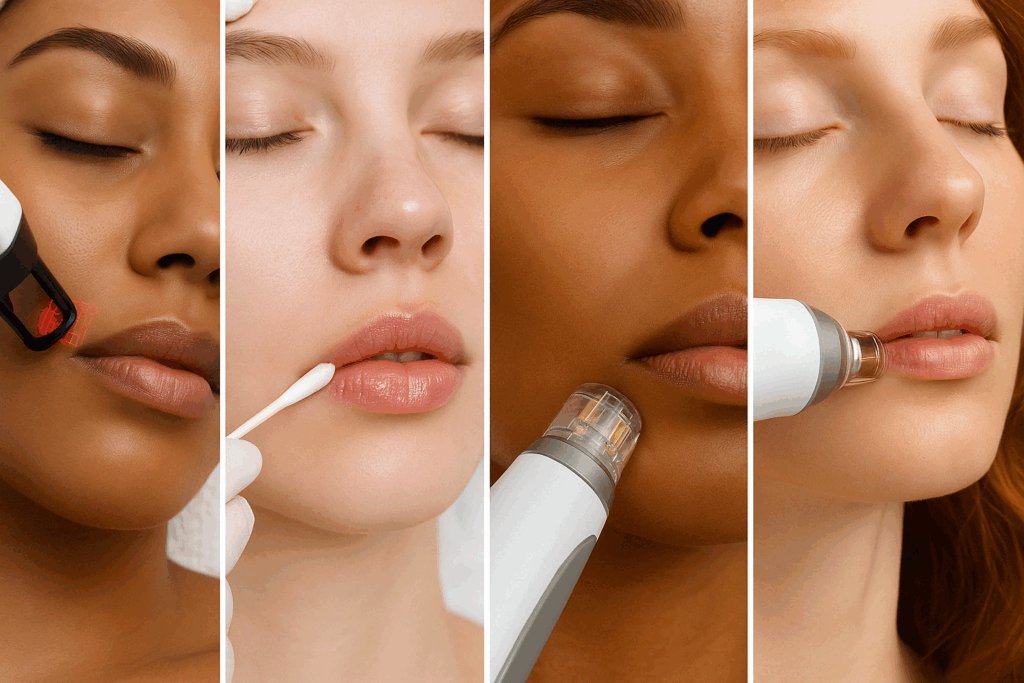
Modern lip resurfacing methods include an array of technologies and techniques, ranging from fractional CO2 lasers and erbium lasers to chemical peels and radiofrequency microneedling. Each of these approaches works by stimulating the skin’s natural healing process. For instance, laser resurfacing removes the outer layer of damaged skin while heating underlying tissues to encourage collagen production. Chemical peels achieve a similar effect through the application of acid solutions that exfoliate and rejuvenate the skin. Radiofrequency microneedling combines the benefits of controlled injury with thermal stimulation, penetrating deeper layers for robust tissue remodeling. The choice of method often depends on skin type, the severity of wrinkles, and a patient’s tolerance for downtime.
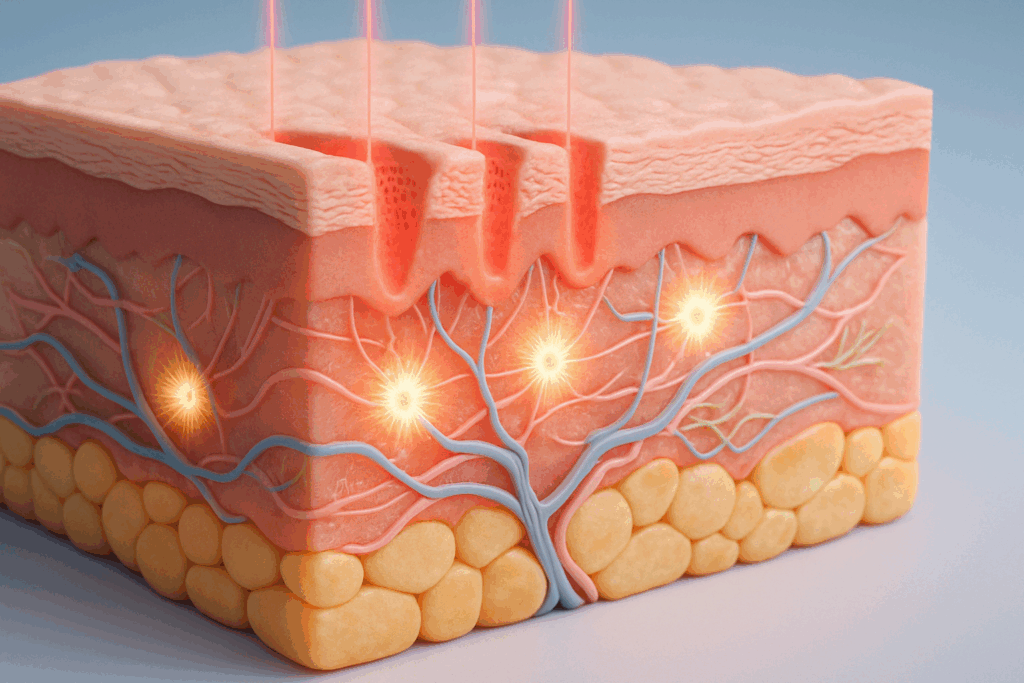
One of the most transformative aspects of lip resurfacing is its ability to foster dermal remodeling. By deliberately creating micro-injuries in the skin, the body is triggered to initiate repair mechanisms that result in tighter, smoother skin over time. This natural process of collagen and elastin renewal can significantly reduce the appearance of fine lines and even improve pigmentation issues around the lips. In contrast to injectable treatments that add volume without necessarily enhancing skin quality, resurfacing techniques actively work to improve the skin’s foundational structure. This makes lip resurfacing a particularly appealing option for individuals who are looking for the best treatment for wrinkles around the mouth that delivers both subtlety and sophistication.
However, lip resurfacing is not a one-size-fits-all solution. A crucial part of achieving optimal outcomes lies in the customization of treatment plans. Factors such as skin sensitivity, ethnic background, and personal health history must be considered. For example, patients with darker skin tones may face a higher risk of post-inflammatory hyperpigmentation after laser treatments and may benefit more from gentler approaches like radiofrequency microneedling or light chemical peels. Moreover, individuals prone to cold sores require pre-treatment antiviral therapy to prevent flare-ups. A board-certified dermatologist or plastic surgeon with expertise in skin resurfacing can assess these nuances, ensuring safety while maximizing aesthetic results.
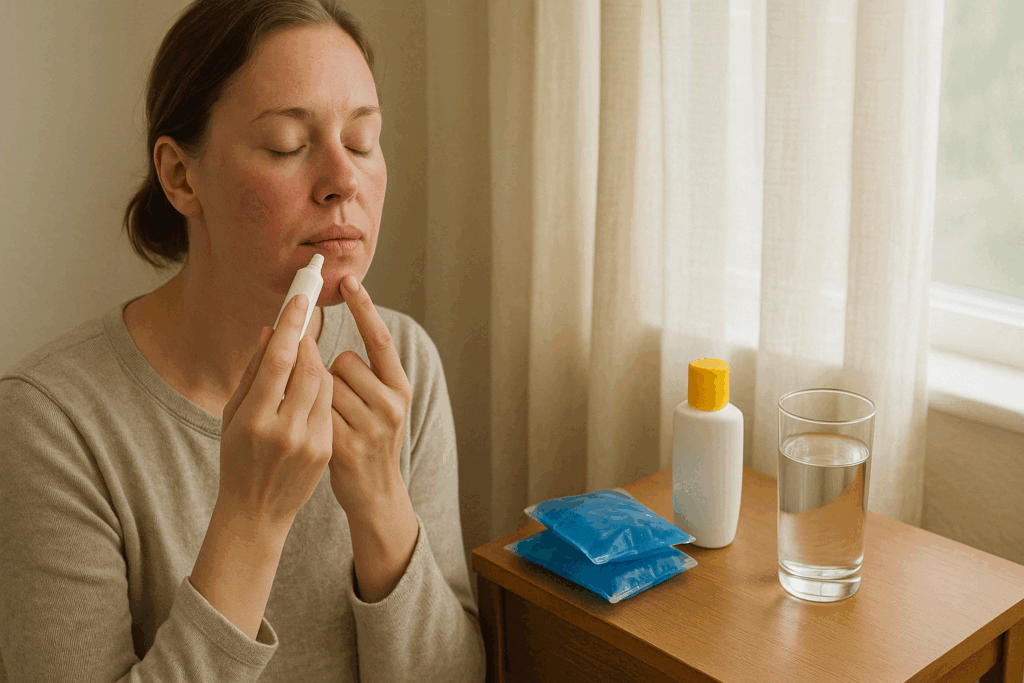
An essential part of the lip resurfacing journey is post-treatment care. Because the skin around the mouth is delicate, healing protocols must be meticulously followed to avoid complications and achieve the desired outcome. Patients are usually advised to avoid sun exposure, use medical-grade emollients, and refrain from picking at peeling skin during the recovery phase. Depending on the intensity of the procedure, full healing may take anywhere from a few days to two weeks. Some residual redness may persist for several weeks, but this gradually fades, revealing smoother, younger-looking skin. A commitment to aftercare also influences long-term results, as consistent skincare maintenance can extend the benefits of the treatment significantly.
In clinical practice, lip resurfacing is often combined with other non-surgical modalities for a more comprehensive rejuvenation strategy. For instance, dermal fillers can restore volume loss around the nasolabial folds and marionette lines, while neuromodulators like Botox can reduce dynamic wrinkles from habitual muscle movement. Together, these synergistic treatments provide a balanced approach that addresses both surface-level and structural concerns. This integrated method is especially beneficial for individuals seeking the best treatment for wrinkles around the mouth because it offers a layered solution to an inherently multifaceted problem. When performed under medical supervision, these combinations are safe, effective, and tailored to enhance natural facial harmony.
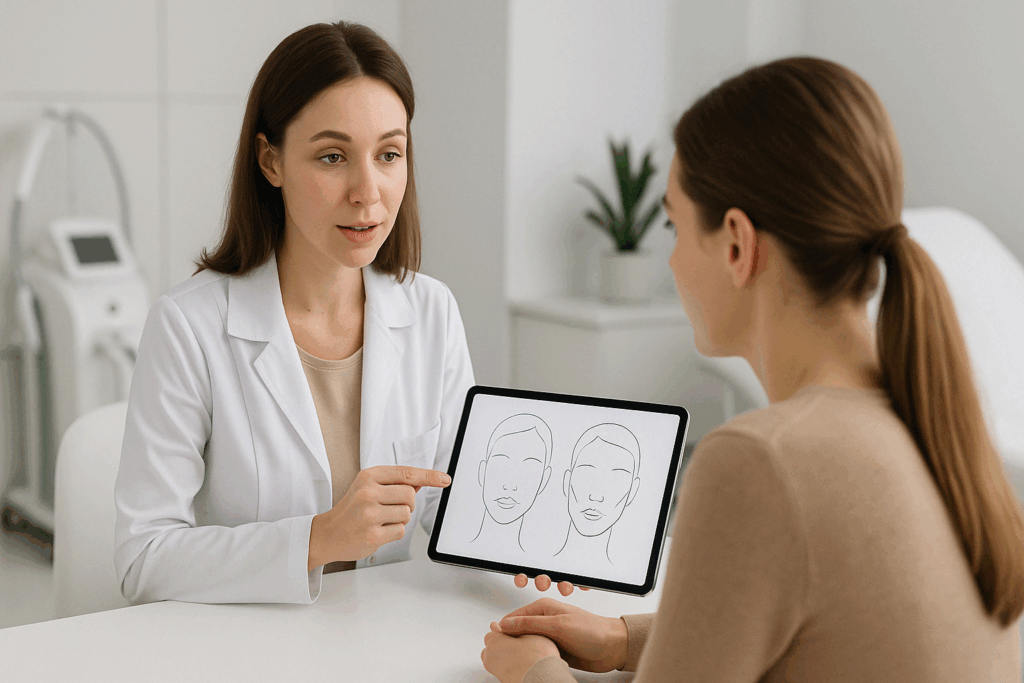
Recent advances in technology have further refined the safety and efficacy of lip resurfacing techniques. Fractional lasers now allow practitioners to treat only a fraction of the skin at a time, leaving surrounding areas untouched to speed up healing and reduce downtime. Devices equipped with cooling systems or contact sensors enhance patient comfort and precision. Moreover, innovations in topical anesthetics and numbing protocols make procedures more tolerable, even for those with low pain thresholds. These technological improvements have broadened the demographic of people seeking resurfacing treatments, including those previously hesitant due to concerns about discomfort or recovery time.
While the aesthetic motivations for pursuing lip resurfacing are clear, the emotional and psychological benefits should not be overlooked. Feeling confident in one’s appearance can lead to improved self-esteem, greater social engagement, and a more positive outlook on aging. For many, treating wrinkles around the mouth is not just about vanity—it’s about restoring a sense of self that may have felt lost. When individuals look in the mirror and see a face that better reflects their inner vitality, the impact goes beyond skin deep. In this way, lip resurfacing contributes to mental well-being as much as it does to physical appearance, making it a powerful tool within the broader landscape of health and wellness.
Affordability and accessibility also play a role in the growing popularity of lip resurfacing. While once considered a luxury reserved for the elite, advances in technology and a competitive market have made these treatments more attainable for a broader population. Many clinics now offer payment plans, packages, and seasonal promotions that make it easier for patients to commit to long-term skin care strategies. Compared to surgical alternatives, the cost-benefit ratio of resurfacing procedures is quite favorable, particularly when considering the natural-looking outcomes and minimal risks involved. This makes lip resurfacing an attractive option not just for its cosmetic benefits but also for its practicality as a sustained approach to facial rejuvenation.
It’s important to note that not all resurfacing outcomes are immediate. While some individuals may notice an initial improvement in skin texture, the full effects often unfold over several months as collagen production ramps up and cellular turnover continues. This delayed gratification can be frustrating for those accustomed to instant results, but it is precisely this gradual progression that leads to a more authentic and enduring transformation. Patience is key, and practitioners often recommend a series of treatments spaced several weeks apart to build upon earlier gains and fine-tune the outcome. Understanding this timeline is essential for setting realistic expectations and achieving satisfaction with the final result.
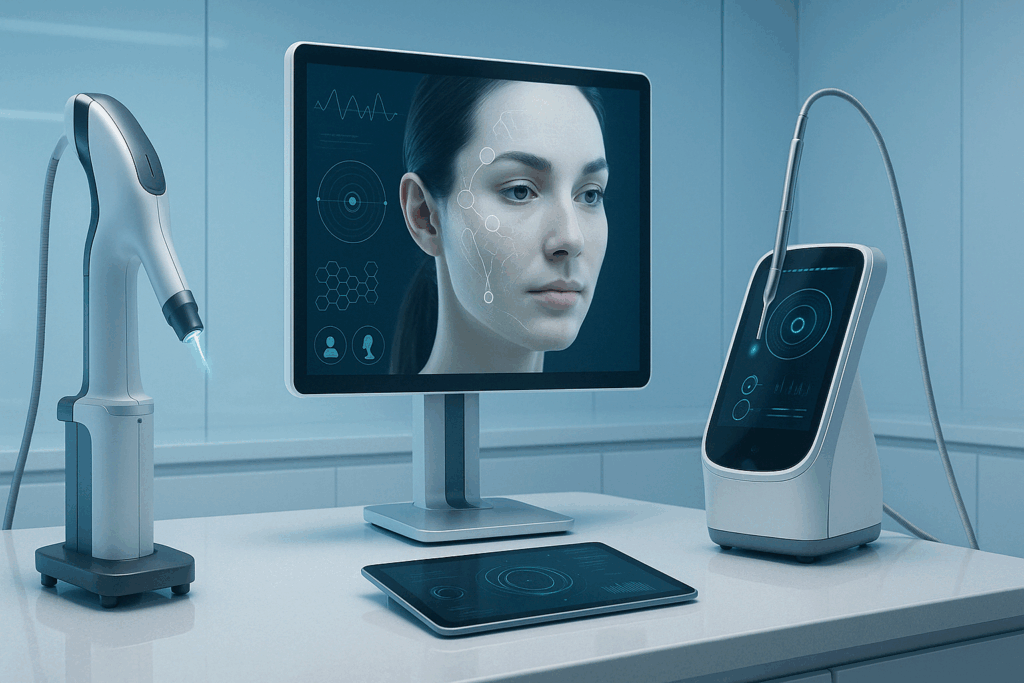
The role of lifestyle cannot be understated when evaluating the long-term effectiveness of any cosmetic treatment. Smoking, excessive alcohol consumption, poor nutrition, and unprotected sun exposure can all undermine the benefits of lip resurfacing. Conversely, adopting a skin-supportive lifestyle—rich in antioxidants, hydration, and barrier-protecting habits—can amplify and sustain results. Some clinicians even offer nutritional counseling and supplement regimens alongside skin treatments to support collagen synthesis and cellular health from within. This holistic approach aligns well with the principles of integrative medicine and reinforces the idea that true beauty begins with overall well-being.
In light of growing consumer interest in personalized skincare, lip resurfacing represents a sophisticated, targeted solution that aligns with the demand for minimally invasive yet effective treatments. It speaks to a broader trend in aesthetic medicine where precision and personalization are paramount. With the right technique, provider, and post-care strategy, lip resurfacing can be transformative—not just in softening the appearance of wrinkles around the mouth but in renewing one’s relationship with aging itself. By enhancing both form and function, this treatment offers more than cosmetic appeal; it delivers a sense of agency and empowerment in the face of time.
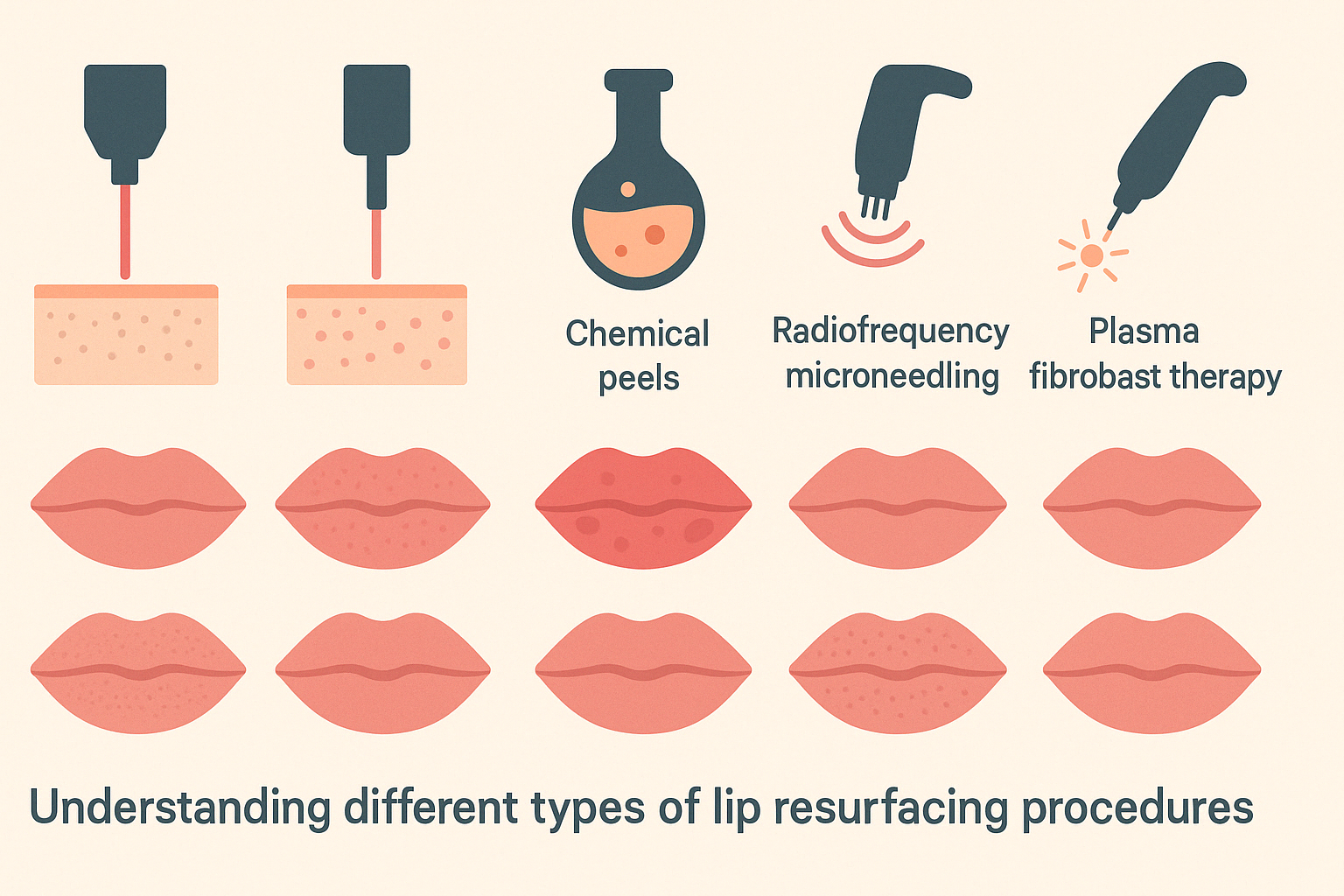
Understanding the different types of lip resurfacing procedures available is key to making an informed choice. Laser treatments, such as fractional CO2 and erbium YAG, are among the most aggressive yet effective techniques for deep wrinkles. These modalities work by ablating damaged skin while inducing a thermal effect that promotes collagen remodeling. Chemical peels, which vary in depth depending on the solution used, offer a more controlled form of exfoliation and are often preferred for those with milder concerns or sensitive skin. Meanwhile, newer approaches like radiofrequency microneedling and plasma fibroblast therapy provide alternatives for individuals seeking reduced downtime with comparable efficacy. Each method has its merits and drawbacks, making professional consultation indispensable.
Equally important is the growing body of clinical research that supports the efficacy of lip resurfacing. Studies published in peer-reviewed dermatology journals consistently demonstrate significant improvements in perioral wrinkles, skin elasticity, and overall texture following resurfacing treatments. These outcomes are not just anecdotal; they are backed by histological evidence showing increased collagen density and reorganization of dermal structures. As the field continues to evolve, researchers are exploring ways to optimize treatment protocols, minimize side effects, and expand the suitability of these procedures to a wider range of skin types and ages. This evidence-based approach strengthens the credibility of lip resurfacing as a medical intervention and underscores its role as one of the best treatments for wrinkles around the mouth.
Ultimately, the decision to undergo lip resurfacing should be guided by individual goals, medical history, and aesthetic preferences. While the procedure offers significant benefits, it is not without risks, including temporary redness, swelling, and in rare cases, scarring or pigmentation changes. These risks, however, can be greatly minimized by choosing an experienced provider who adheres to best practices and follows up with patients throughout the healing process. Thorough consultation, informed consent, and clear communication are the cornerstones of a successful experience. In the right hands, lip resurfacing can be a safe, rewarding step toward a more youthful and confident you.
Frequently Asked Questions: Lip Resurfacing and the Best Treatment for Wrinkles Around the Mouth
1. Can lip resurfacing improve more than just wrinkles around the mouth?
Absolutely. While the best treatment for wrinkles around the mouth often centers on lip resurfacing, this procedure can address a wide range of skin imperfections. Patients commonly report improvements in vertical lip lines, smoker’s lines, and uneven pigmentation. Some methods, like fractional CO2 lasers, also stimulate collagen production across the entire lower face, contributing to tighter, more youthful skin overall. This broader effect is especially valuable for individuals whose perioral aging is accompanied by sagging or skin laxity extending into the chin and lower cheeks.
2. How does age affect the success of lip resurfacing treatments?
Age plays a nuanced role in determining outcomes. While lip resurfacing is one of the best treatments for wrinkles around the mouth at any stage of adulthood, younger patients tend to heal faster and may require fewer sessions due to higher baseline collagen levels. However, older adults often see dramatic improvements because the contrast between pre- and post-treatment skin is more visible. Moreover, older patients are increasingly combining resurfacing with other regenerative therapies like platelet-rich plasma (PRP) to boost healing and collagen production. Age should not deter someone from seeking lip resurfacing; rather, it should shape the strategy used to deliver optimal results.
3. Is lip resurfacing safe for individuals with sensitive or allergy-prone skin?
Lip resurfacing can be performed safely on sensitive skin, but a tailored approach is essential. Not all modalities are appropriate for all skin types; for instance, harsh chemical peels may trigger irritation or allergic reactions. For those with a history of skin allergies or reactivity, less invasive options like radiofrequency microneedling or low-energy erbium lasers are generally well tolerated. An experienced dermatologist will conduct a patch test or recommend a preliminary treatment to gauge skin response. Ultimately, even for those with delicate skin, lip resurfacing can still be the best treatment for wrinkles around the mouth when performed under proper medical guidance.
4. How do lifestyle habits affect the long-term results of lip resurfacing?
Post-treatment success is heavily influenced by lifestyle. Even the best treatment for wrinkles around the mouth will offer diminished results if smoking, dehydration, or chronic sun exposure continue after the procedure. Nicotine use, in particular, accelerates collagen breakdown and restricts circulation, undermining healing. Alcohol can contribute to inflammation and dehydration, while a nutrient-poor diet slows skin regeneration. On the flip side, hydration, antioxidant-rich foods, and consistent use of sunscreen can dramatically extend the benefits of lip resurfacing, allowing the skin to remain smoother and more resilient over time.
5. What innovations are shaping the future of lip resurfacing?
Technological advances are continually redefining what qualifies as the best treatment for wrinkles around the mouth. One emerging innovation is the use of nanofractional radiofrequency, which delivers energy more precisely with less epidermal damage. Stem-cell enriched serums are also being paired with laser treatments to enhance post-procedure recovery and tissue regeneration. Artificial intelligence tools are starting to guide practitioners in customizing energy settings for each patient, improving safety and predictability. Additionally, devices are being designed with adaptive feedback systems that monitor skin response in real-time. These breakthroughs are making lip resurfacing safer, more effective, and more personalized than ever.
6. Can lip resurfacing treatments be safely repeated over time?
Yes, lip resurfacing is generally safe for repeat sessions, provided there is adequate spacing between treatments. In fact, repeat procedures can enhance and maintain results, particularly when addressing deeper or more stubborn lines. The best treatment for wrinkles around the mouth is often a series of strategically spaced sessions rather than a one-time fix. Some individuals return annually for maintenance, while others may undergo a short series of treatments every few months. A skilled provider will evaluate healing patterns and skin response to recommend an appropriate schedule for repeat resurfacing without compromising skin integrity.
7. How do results from lip resurfacing compare to dermal fillers around the mouth?
Lip resurfacing and dermal fillers serve distinct but complementary purposes. Fillers restore lost volume, softening creases and folds, while resurfacing improves skin texture and elasticity. For individuals seeking the best treatment for wrinkles around the mouth, combining the two can yield synergistic results. However, unlike fillers, which offer immediate but temporary results, lip resurfacing promotes gradual, lasting improvements through tissue remodeling. Many patients appreciate the natural-looking outcome of resurfacing, especially when they prefer subtlety over volume enhancement.
8. Are there psychological benefits associated with undergoing lip resurfacing?
Yes, the psychological impact of lip resurfacing can be profound. Many patients report feeling more confident and less self-conscious in social or professional settings. The improvement in appearance—especially in a focal area like the mouth—can renew a sense of self-esteem and emotional well-being. While it’s not a replacement for mental health care, feeling satisfied with one’s reflection often creates a positive feedback loop that enhances mood and motivation. For individuals who view aesthetic treatments as part of a holistic self-care plan, lip resurfacing becomes more than cosmetic—it becomes emotionally restorative.
9. What role does skin tone play in selecting the right resurfacing technique?
Skin tone is a critical factor in choosing the safest and most effective resurfacing method. Darker skin types are more prone to post-inflammatory hyperpigmentation, especially when aggressive lasers are used. For these individuals, the best treatment for wrinkles around the mouth may involve gentler modalities like radiofrequency or enzyme-based peels. Emerging pigment-safe lasers are beginning to expand options for skin of color, offering controlled energy delivery that reduces melanin disruption. A personalized approach that considers ethnic background ensures that lip resurfacing remains both safe and inclusive.
10. How should patients prepare in the weeks leading up to a lip resurfacing appointment?
Proper preparation can significantly enhance the outcome and safety of lip resurfacing. Patients should avoid sun exposure, exfoliants, and retinoids in the two weeks prior to treatment to reduce the risk of irritation. Those with a history of cold sores should begin prophylactic antiviral medication to prevent outbreaks, which can be triggered by the skin trauma associated with resurfacing. Nutrition and hydration also play a role; boosting intake of vitamins C and E can support healing and collagen synthesis. By taking a proactive role in pre-treatment care, individuals increase the likelihood that lip resurfacing will be the best treatment for wrinkles around the mouth in both effectiveness and recovery experience.
Rejuvenating the Smile Zone: Why Lip Resurfacing Is One of the Best Treatments for Wrinkles Around the Mouth
In a world where first impressions often hinge on facial expression, the area around the mouth plays an outsized role in how we present ourselves. Wrinkles in this delicate region can prematurely age the face, even when the rest of the skin remains youthful. Fortunately, lip resurfacing offers a scientifically grounded, medically sound approach to restoring vibrancy and smoothness where it counts most. Whether performed alone or in combination with other treatments, lip resurfacing addresses the structural causes of aging skin, not just the symptoms. Its ability to stimulate collagen, refine texture, and renew self-confidence places it firmly among the best treatments for wrinkles around the mouth. As aesthetic medicine continues to advance, so too does the opportunity to age with intention, elegance, and empowered choice.
Was this article helpful? Don’t let it stop with you. Share it right now with someone who needs to see it—whether it’s a friend, a colleague, or your whole network. And if staying ahead on this topic matters to you, subscribe to this publication for the most up-to-date information. You’ll get the latest insights delivered straight to you—no searching, no missing out
Further Reading:
Best Lip Lines Treatments for Lip Wrinkles
Laser for Wrinkles & Lines Around the Mouth
What can be done about lip wrinkles, lines on lips
Disclaimer
The information contained in this article is provided for general informational purposes only and is not intended to serve as medical, legal, or professional advice. While Health11News strives to present accurate, up-to-date, and reliable content, no warranty or guarantee, expressed or implied, is made regarding the completeness, accuracy, or adequacy of the information provided. Readers are strongly advised to seek the guidance of a qualified healthcare provider or other relevant professionals before acting on any information contained in this article. Health11News, its authors, editors, and contributors expressly disclaim any liability for any damages, losses, or consequences arising directly or indirectly from the use, interpretation, or reliance on any information presented herein. The views and opinions expressed in this article are those of the author(s) and do not necessarily reflect the official policies or positions of Health11News.